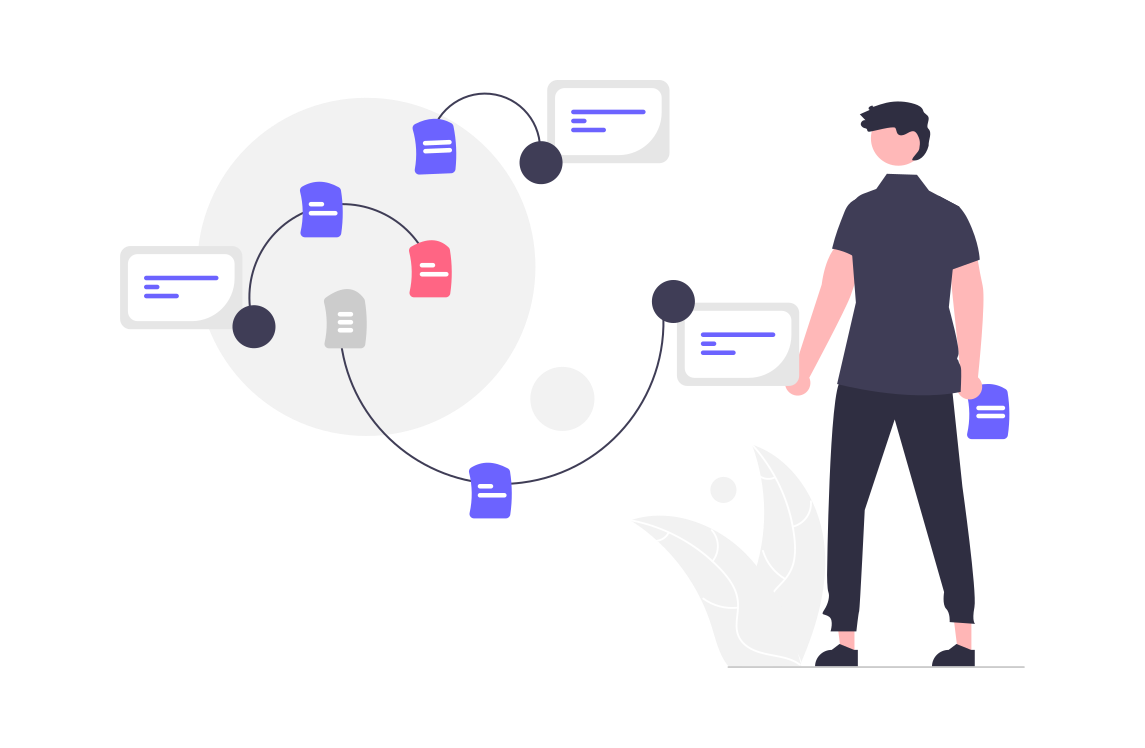ABM and Customer Retention: Strategies for Long-Term Success
August 13, 2024 | Jimit Mehta

In today’s highly competitive market, retaining customers is just as critical as acquiring new ones. Account-Based Marketing (ABM), traditionally known for its precision in targeting and acquiring key accounts, is now proving to be equally powerful in fostering customer retention. By adopting a strategic ABM approach, businesses can build stronger relationships with existing customers, ensuring long-term success. Here’s how ABM can be leveraged to enhance customer retention through targeted and personalized strategies.
1. Understanding the Role of ABM in Customer Retention
ABM is a strategy that involves tailoring marketing efforts to specific, high-value accounts. When applied to customer retention, ABM shifts focus from acquiring new customers to nurturing and expanding existing relationships. The key to success lies in delivering personalized experiences that resonate with each account, reinforcing their decision to remain with your business.
2. Prioritize High-Value Accounts
One of the foundational principles of ABM is focusing on the accounts that matter most to your business. When it comes to customer retention, this means identifying the accounts that bring the most value to your company. Prioritize these accounts by dedicating resources to understanding their needs, challenges, and goals. By doing so, you can create highly tailored strategies that address their specific pain points and drive continuous value.
3. Personalize Engagement Across Touchpoints
Personalization is at the heart of successful ABM strategies. To retain customers, it’s crucial to maintain personalized engagement throughout the customer lifecycle. This includes everything from tailored email campaigns to customized content that speaks directly to the unique needs of each account. By consistently delivering relevant and valuable information, you strengthen your relationship with customers, making them feel valued and understood.
4. Leverage Data-Driven Insights
Data plays a crucial role in any ABM strategy, especially when it comes to customer retention. Utilize data analytics to gain insights into customer behavior, preferences, and engagement patterns. This information can help you anticipate customer needs, identify potential risks, and proactively address issues before they lead to churn. By leveraging data-driven insights, you can refine your ABM approach to be more responsive and effective in retaining customers.
5. Foster Cross-Functional Collaboration
ABM requires a collaborative effort across various departments, including sales, marketing, and customer success teams. To enhance customer retention, it’s essential to align these teams around shared goals and strategies. Regular communication and collaboration ensure that everyone is working towards the same objectives, creating a seamless experience for the customer. This unified approach not only strengthens customer relationships but also ensures that your team is equipped to respond quickly to any challenges that arise.
6. Continuously Deliver Value
The success of any customer retention strategy hinges on the ability to continuously deliver value. With ABM, this means regularly evaluating and adapting your offerings to meet the evolving needs of your key accounts. By staying attuned to their business objectives and challenges, you can provide solutions that address their specific needs. Continuous value delivery not only reinforces your relationship with the customer but also positions your business as an indispensable partner in their success.
7. Implement Proactive Communication
Proactive communication is vital in retaining customers. Regular check-ins, personalized updates, and tailored recommendations help keep your business top-of-mind for your customers. In ABM, this proactive approach is amplified by the deep understanding you have of each account. By anticipating their needs and providing timely solutions, you can prevent potential issues and ensure that your customers feel supported at every stage of their journey.
8. Measure and Optimize Retention Efforts
Finally, to ensure the long-term success of your ABM-driven customer retention strategy, it’s important to measure and optimize your efforts continuously. Track key performance indicators (KPIs) such as customer satisfaction, engagement levels, and renewal rates. Use this data to refine your approach, identifying areas for improvement and opportunities to enhance the customer experience. By consistently optimizing your strategies, you can maintain strong relationships with your customers and secure their loyalty over time.
Conclusion
ABM is not just a tool for acquiring new customers; it’s a powerful strategy for retaining them as well. By prioritizing high-value accounts, personalizing engagement, leveraging data, fostering collaboration, and continuously delivering value, businesses can create a robust ABM strategy that drives customer retention. In a market where customer loyalty is crucial, implementing these ABM strategies will ensure long-term success and sustained growth.
Related posts
Executive Buy-In for ABM: Strategies for Gaining and Maintaining Support
Account-Based Marketing (ABM) is a powerful strategy that can significantly boost your company's revenue and customer engagement. However, its success heavily depends on executive buy-in. Without support from the top, ABM initiatives can struggle to gain the resources and attention they need to...

